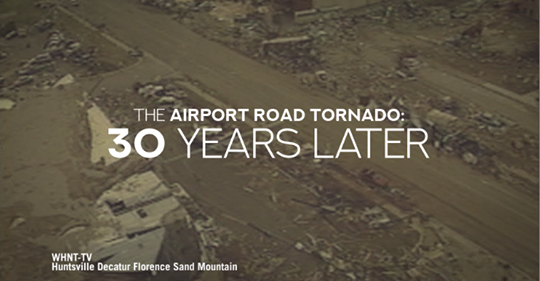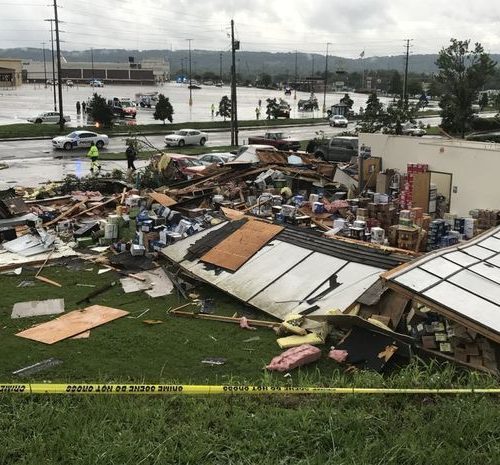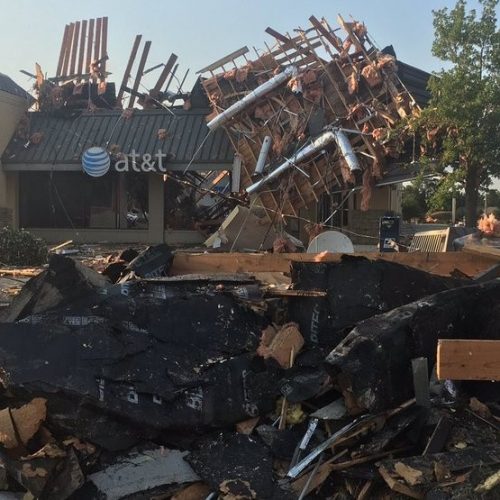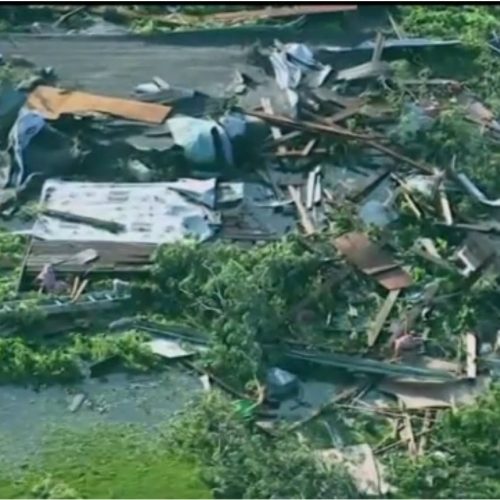HUNTSVILLE, Ala. – On November 15, 1989, an F-4 tornado carved an 18.5 mile path through south Huntsville and parts of eastern Madison County. Three decades later, it remains the deadliest tornado in Huntsville’s history.
The events of that day resulted in 21 deaths and 463 injuries. The tornado also destroyed 259 homes, 80 businesses and two schools, while damaging another 278 homes, eight businesses, three churches and more than one thousand vehicles.
The Day
Storm spotters first reported seeing a tornado around 4:30 that Wednesday afternoon, the start of rush hour for one of Huntsville’s main arteries. Within minutes the National Weather Service issued a tornado warning.
“We were all on the alert, we knew what was coming that day,” said former WHNT News 19 meteorologist Tim Simpson. “We knew that there was a severe threat. We knew that it could be substantial and it was.”
In roughly 30 minutes, the tornado tore through south Huntsville.
“The first thing I remember thinking was that we’ve lost a lot of folks in this,” said former Huntsville mayor Steve Hettinger. “I mean, it was truly as if a war zone had come through and bomb dropped through there and you just knew not everybody got safely out of this.”
Nineteen of the 21 deaths from that day happened along Airport Road between Memorial Parkway and Whitesburg Drive.
“It’s so widespread you didn’t know if people were in the rubble,” said former Huntsville police officer Jay Spencer. “So immediately I’m thinking about, all right, we’ve got to find people that are alive and could use our help.”
Hours into the search and rescue efforts on that evening, bitter cold and snow slowed first responders’ progress.
“It wasn’t cold when we started,” said former HEMSI paramedic Scott Starrett. “It was in the 70s, I believe. And then we got from under the rubble and it was cold and I’m thinking, ‘Where are we, when did it get so cold?'”
In addition to first responders from throughout the city and across north Alabama, the Army sent more than 700 soldiers to help with emergency operations.
Four days into the cleanup efforts, the vice president’s wife, Marilyn Quayle, toured the devastation. The area ultimately received $4 million in federal disaster relief.
The Path
As for the tornado itself, it was rated an F-4, but it wasn’t a classic funnel. This tornado presented as a wedge.
For those on the ground along Airport Road on November 15, 1989, the only cues indicating a tornado was heading their way, were the sound and the flying debris.
The storm developed over Redstone Arsenal and began to travel northeast with winds approaching 250 miles per hour. It moved over the old airport, the police K-9 training facility and the municipal golf course.
Then, it made a straight shot for one of the city’s main thoroughfares, Airport Road, filled with businesses and people. The tornado topped Garth Mountain, demolishing Jones Valley Elementary School. It continued through Jones Valley neighborhoods before crossing Huntsville Mountain and moving into the county, finally ending at Killingsworth Cove Branch.
The Lessons
The storm lasted just 30 minutes, but its impact is still being felt 30 years later. Time erased most signs of physical damage throughout the city, but the day helped lead to immeasurable changes in how it responds to disasters.
“I don’t think you can ever be prepared,” said Starrett. “It was like a war zone and something I’ll never forget. It’s not scripted, so you have to take what you learn, take your resources and develop it from there.”
From increased mass casualty training to improved disaster readiness, November 15, 1989, helped arm the Tennessee Valley for severe weather events.
“We didn’t really have a good way to set up a command center at that time,” said Hettinger. “After that, we got a vehicle.”
“Now, they’ve got them set up with work stations and radio systems already in place, lighting and all that,” said Spencer.
In the last three decades, Huntsville Hospital expanded its trauma rooms to six bays, each able to treat three patients.
“This is where the worst things happen but they have everything in this room to operate on you if they need to,” said former Huntsville Hospital Emergency Room Director Robbin McCord. “Back then we had two trauma rooms and it was separated by a curtain.”
Forecasting technology as evolved, too. Now, meteorologists are equipped with better tools to identify, track and warn for deadly weather.
“If it did anything, it reinforced the fact, when we break into programming for tornado warnings, that’s the reason we’re breaking in, just look at the damage from this storm 30 years ago,” said Simpson.
The Response
Another lesson learned from that day, just how responsive the Tennessee Valley can be. The tornado hit about a week before Thanksgiving day that year and goodwill, grace and gratitude were in abundant supply.
In the waning hours of November 15, 1989, survivors became rescuers and debris became stretchers.
“Everybody just kind of came into a role,” said Starrett. “Civilians carried people into hospitals on doors.”
The hours of search and rescue efforts were followed by even more hours of cleanup. Those hours were also filled with every kind of donation from monetary to blood.
“The way the people in this community rallied together to dig the people out that were in Golbro’s and that shopping center and the apartments and stuff, it was unbelievable,” said storm survivor Lynn McQueen. “And it makes me feel good that I live in a community that is like that.”
Good Samaritans brought campers to tornado-ravaged streets providing storm survivors a private spot for warmth and quiet. Other volunteers brought fresh food, clean clothes and high spirits.
“We’ll all need to pull together again sometime,” said Hettinger. “Let’s just remember how well we did that day. And just realize that it’s all about us working together as people.”
The Victims
Larry F. Ammerman, 46, Corrine “Rene” Bentley, 42 , James Russell Black, 45, Della Mae Broad Buford, 68, Godwin Yee Chen, 7, Allen Dale Cruse, 46, Thomas P. Fry, 32, Vanessa Hastings-Pool, 22, Audrey L. Hurford, 25, Rosa Burke Johnson, 49, Karen E. Jones, 48, Scott Kraselsky, 36, John Lewis, 47, Wanda Lewis, 50, Karen D. Luker, 23, Jennifer Luker, 2, Mary Elizabeth Matheny, 67, Louise McCord, 61, James “Burt” Shummerour, 30, Melba Sweeten, 52, Ola Dowan Wilbanks, 86
by Christine Killimayer (2019, Nov 14) WHNT





